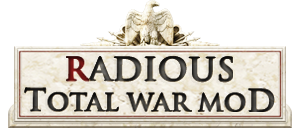Assault Dieres - Perioikoi Hoplites
With a ramming attack that can break an enemy hull, these ships are deadly weapons.A man will fight in defence of his home, even if he is not strictly a citizen.
The waterline ram was first mounted on a vessel in around 850BC. Warships and naval tactics were transformed. Ships were no longer platforms for infantry battles on the water; the ship itself became the weapon. Galleys changed as the new reality sank in. Ramming at speed would hole and sink an enemy, therefore slimmer, faster, handier ships were required. More speed on demand obviously required more oars a fast ship with a single row of oars ended up being stupidly, impractically long. The solution, then, was to put in a second set of oars above the first, but slightly offset to allow for rowers' benches. These biremes, a Latin word meaning 'two oars', or dieres, the Greek equivalent, were no longer than previous designs but had twice the number of rowers. They were fast, manoeuvrable, and could carry a fighting contingent. Some nations also gave their bireme crews fire pots; these clay pots filled with oil and pitch were hurled at enemy ships in the entirely reasonable hope of setting them ablaze.
(Perioikoi Hoplites)
The ‘dwellers around’, the periokoi were a free, but non-citizen class of Sparta. As the Spartans themselves could pursue no profession other than that of the warrior, the periokoi fulfilled the roles of artisans and merchants in the Lacedaemonian state, eventually taking on the roles in the Spartan army considered unsuitable for true citizens, such as skirmishing and cavalry. Living along the coast and in the many hill towns surrounding the fertile valleys of Eurotas and Pamisos, they acted as a barrier between the Spartan citizens and the rest of Greece - a barrier that also kept in the helots, the Spartans' slaves that farmed the valleys below the city. Like other Greeks, the periokoi were expected to purchase and maintain their own arms and armour, each town contributing to the Spartan war machine when required. Even though they were allowed their own laws and customs, as non-citizens periokoi could not influence or vote on Spartan foreign or military policy.
Unit Name Assault Dieres - Perioikoi Hoplites |
Main Unit Key Gre_Per_Hoplites_Two |
Land Unit Key Gre_Periokoi_Hoplites |
Naval Unit Key greek_two |
Soldiers 60 |
Category Medium Ship |
Class Melee Ship |
Custom Battle Cost 360 |
Recruitment Cost 360 |
Upkeep Cost 70 |
Ship Health 467 |
└ Ship greek_two |
Ship Speed 6 |
Melee Attack 21 |
Weapon Damage 30 |
├ Melee Weapon rome_hoplite_spear |
├ Melee Damage Base 16 |
├ Melee Damage Ap 14 |
├ Armour Piercing No |
├ Bonus vs. Large 10 |
├ Bonus vs Elephants 12 |
└ Bonus vs Infantry 0 |
Charge Bonus 16 |
Melee Defence 69 |
├ Base Defence 43 |
├ Shield hoplite |
└ Shield Defence 26 |
Armour 90 |
├ Armour leather |
├ Armour Defence 47 |
└ Shield Armour 43 |
Health 75 |
├ Man Entity rome_infantry_hoplite |
├ Man Health 60 |
└ Bonus Hit Points 15 |
Base Morale 45 |
Abilities
Assault Dieres- Row Hard 10
Increases speed for 10 strokes.
Ship speed
- Hoplite Wall
The unit moves into close wall formation.
Bracing, melee defence, shield strength
Acceleration, speed - Square
The unit moves into a close square formation.
Bracing, morale, melee defence
Can't move - Rapid Advance
Improved unit movement speed over an extended period.
Speed, acceleration, charge speed
Exertion: fatigue
Attributes
- Disciplined
This unit does not suffer a morale penalty when the general dies. It can also rally after routing more often. - Hide (forest)
This unit can hide in forests until enemy units get too close.
Strengths & Weaknesses
Assault Dieres- Very poor hull strength
- Very light crew
- Fast speed
- Weak ramming
- Good boarding
- Good defensive unit
- Low damage but average armour penetration
- Average attack
- Normal morale
| Faction Availability | |
|---|---|
| Grand Campaign | |
| Imperator Augustus | |


 Français
Français Italiano
Italiano Deutsch
Deutsch Español
Español Русский
Русский Čeština
Čeština Polski
Polski Türkçe
Türkçe 简体中文
简体中文 正體中文
正體中文 日本語
日本語
